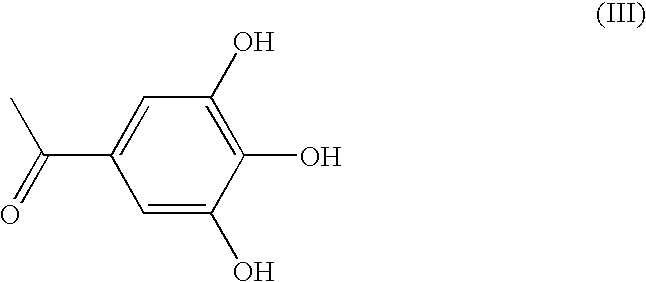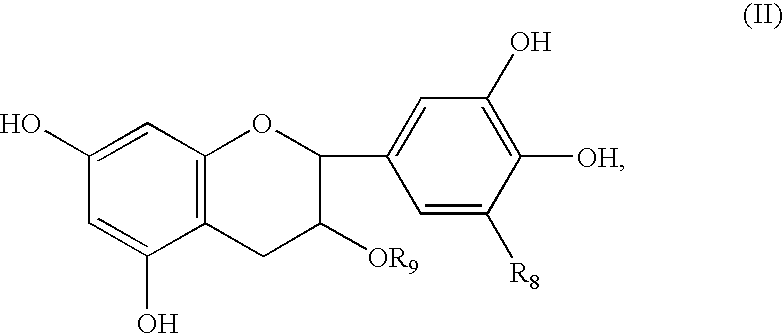Use of a polyphenol for the treatment of actinic keratosis
a technology of actinic keratosis and polyphenol, which is applied in the direction of plant ingredients, biocide, plant growth regulators, etc., can solve the problems of affecting the person afflicted, the rim of the ear and the lower lip is especially vulnerable to the development of this cancer, and the sensation of pricking or tenderness is intense,
- Summary
- Abstract
- Description
- Claims
- Application Information
AI Technical Summary
Problems solved by technology
Method used
Image
Examples
example 2
Patient: 73 years old, male with actinic keratoses known since about 15 years, multiply pre-treated;
The patient was treated with Polyphenon® E (15% ointment containing 35% (w / w) isopropyl myristate, 15% (w / w) catechol extract, 24.5% (w / w) petroleum jelly, 20% (w / w) wax, 5% (w / w) propylene glycol monostearate and 0.5% (w / w) oleyl alcohol): Treated area: about 5 cm2 on the head Treatment schedule: 3 times a week Treatment period: 12 weeks
Treatment progression: after 3.5 weeks of treatment skin irritation of the treated area afflicted by actinic keratoses occurred (but less intense than that of the patient of Example 1)> after 12 weeks of treatment only single actinic keratoses have been left and after 16 weeks of treatment actinic keratoses have disappeared completely
PUM
| Property | Measurement | Unit |
|---|---|---|
| diameter | aaaaa | aaaaa |
| temperature | aaaaa | aaaaa |
| color | aaaaa | aaaaa |
Abstract
Description
Claims
Application Information
 Login to View More
Login to View More - R&D
- Intellectual Property
- Life Sciences
- Materials
- Tech Scout
- Unparalleled Data Quality
- Higher Quality Content
- 60% Fewer Hallucinations
Browse by: Latest US Patents, China's latest patents, Technical Efficacy Thesaurus, Application Domain, Technology Topic, Popular Technical Reports.
© 2025 PatSnap. All rights reserved.Legal|Privacy policy|Modern Slavery Act Transparency Statement|Sitemap|About US| Contact US: help@patsnap.com



